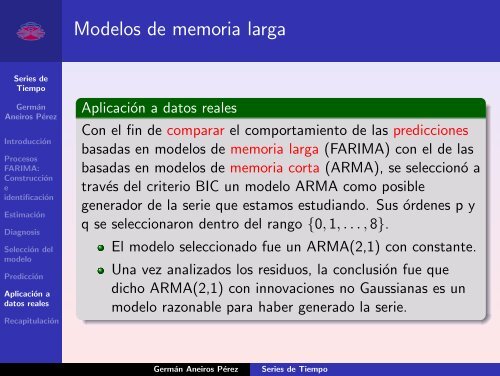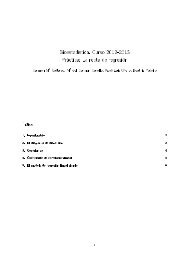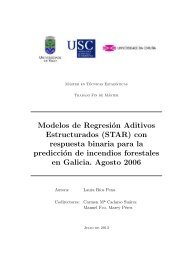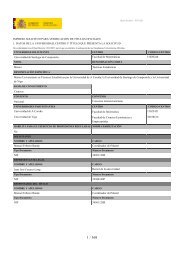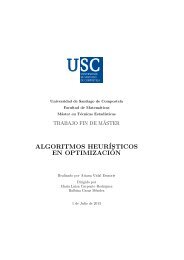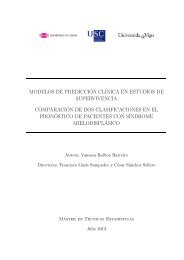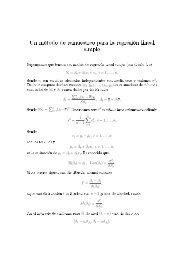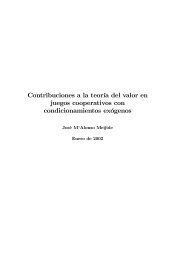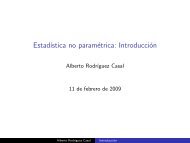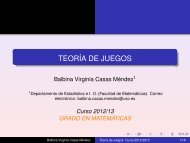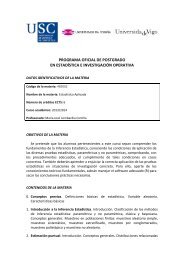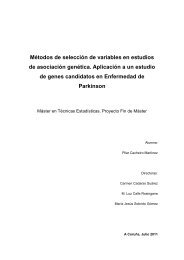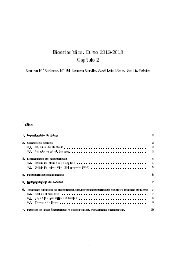You also want an ePaper? Increase the reach of your titles
YUMPU automatically turns print PDFs into web optimized ePapers that Google loves.
Mo<strong>de</strong>los <strong>de</strong> memoria larga<br />
<strong>Series</strong> <strong>de</strong><br />
<strong>Tiempo</strong><br />
Germán<br />
Aneiros Pérez<br />
Introducción<br />
Procesos<br />
FARIMA:<br />
Construcción<br />
e<br />
i<strong>de</strong>ntificación<br />
Estimación<br />
Diagnosis<br />
Selección <strong>de</strong>l<br />
mo<strong>de</strong>lo<br />
Predicción<br />
Aplicación a<br />
datos reales<br />
Recapitulación<br />
Aplicación a datos reales<br />
Con el fin <strong>de</strong> comparar el comportamiento <strong>de</strong> las predicciones<br />
basadas en mo<strong>de</strong>los <strong>de</strong> memoria larga (FARIMA) con el <strong>de</strong> las<br />
basadas en mo<strong>de</strong>los <strong>de</strong> memoria corta (ARMA), se seleccionó a<br />
través <strong>de</strong>l criterio BIC un mo<strong>de</strong>lo ARMA como posible<br />
generador <strong>de</strong> la serie que estamos estudiando. Sus ór<strong>de</strong>nes p y<br />
q se seleccionaron <strong>de</strong>ntro <strong>de</strong>l rango {0, 1, . . . , 8}.<br />
El mo<strong>de</strong>lo seleccionado fue un ARMA(2,1) con constante.<br />
Una vez analizados los residuos, la conclusión fue que<br />
dicho ARMA(2,1) con innovaciones no Gaussianas es un<br />
mo<strong>de</strong>lo razonable para haber generado la serie.<br />
Germán Aneiros Pérez<br />
<strong>Series</strong> <strong>de</strong> <strong>Tiempo</strong>


